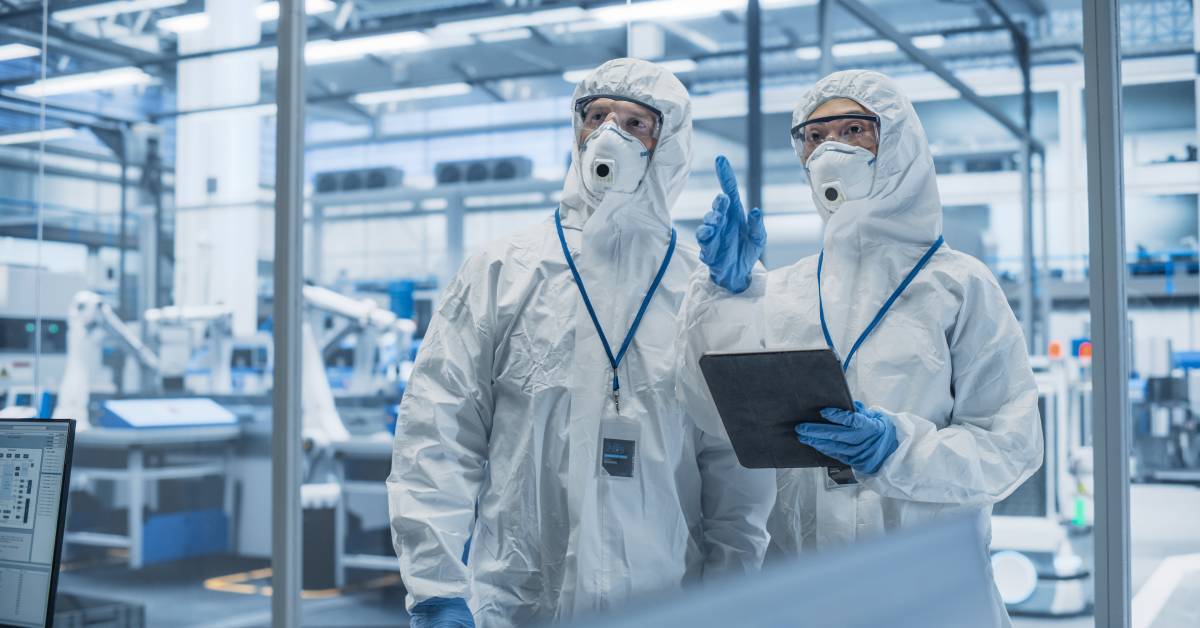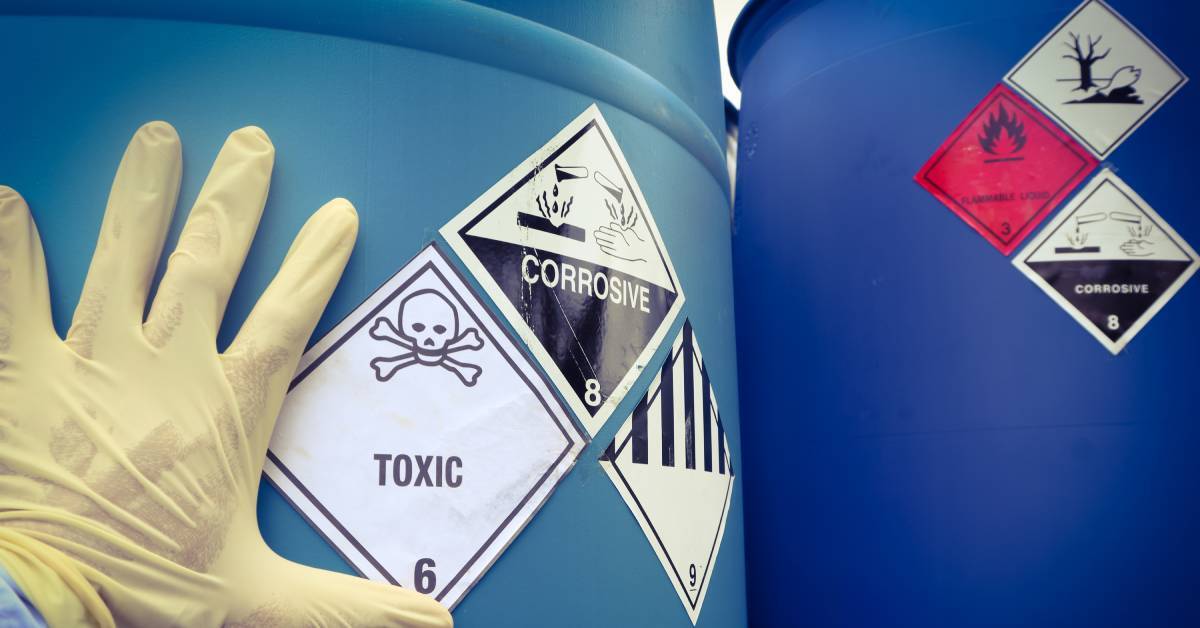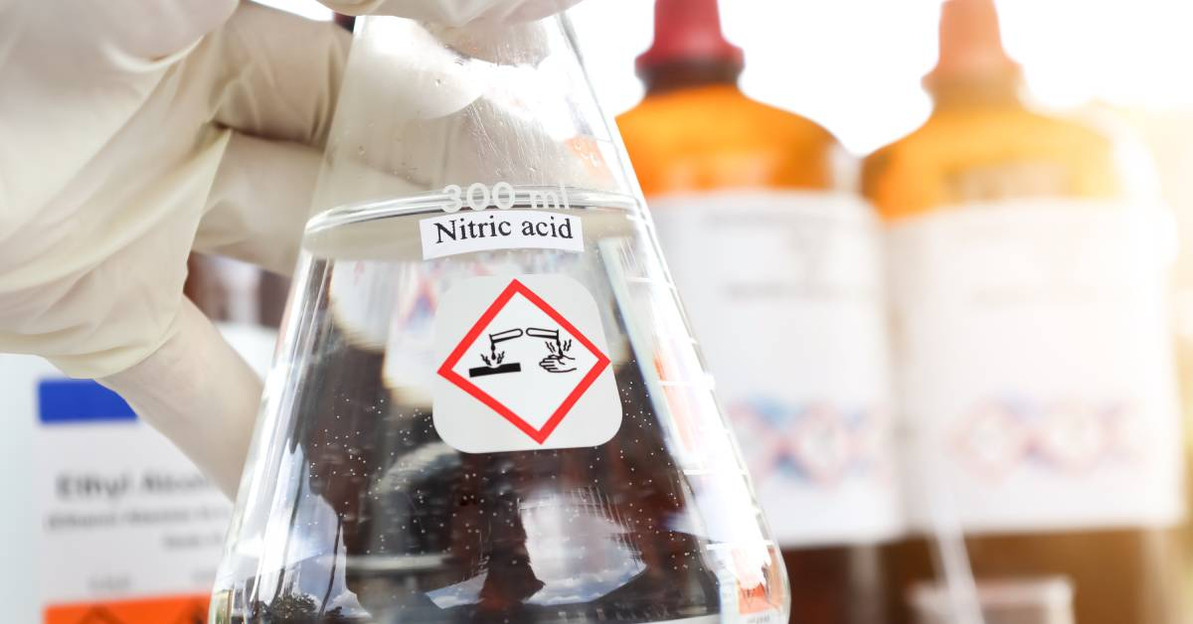How To Safely Dispose of Nitric Acid in Your Lab
Proper disposal of hazardous chemicals in laboratory settings is crucial to ensure the safety of personnel, the environment, and compliance with legal regulations. Nitric acid requires special attention due to its highly corrosive nature and potential to release toxic fumes. Without appropriate handling and disposal, nitric acid can pose significant risks, including chemical burns, respiratory issues, and contamination of water sources, which can have far-reaching environmental impacts.
In addition to the health and environmental concerns, labs must adhere to stringent regulations and guidelines set forth by government agencies such as the Environmental Protection Agency (EPA) and the Occupational Safety and Health Administration (OSHA). These regulations mandate specific procedures and documentation to maintain compliance, prevent incidents, and ensure accountability.
Understanding the characteristics of this product, such as its reaction tendencies and interaction with other substances, is fundamental to disposing of nitric acid safely in your lab. Implementing systematic protocols mitigates the immediate risks associated with handling this hazardous substance and contributes to creating a culture of safety within the laboratory environment.
Understanding Nitric Acid
Nitric acid, a potent acidic oxidizer, plays a vital role in various scientific and industrial processes due to its highly reactive properties. It is common in laboratories for synthesizing polymers, fertilizers, and nitrated compounds, thanks to its ability to act as a vigorous oxidizing agent. This reactivity makes it indispensable in academic research and industrial applications.
However, despite its utility, nitric acid poses significant safety challenges. It is highly corrosive, capable of causing severe burns and emitting toxic nitrogen dioxide fumes when it reacts with organic materials. Its propensity to engage in vigorous and exothermic reactions requires stringent safety measures to manage and utilize it safely.
Identification and Labeling
Accurate identification and labeling of nitric acid containers are critical components of the disposal process for safe handling and regulatory compliance within the laboratory. Every container should display the chemical name, concentration, and appropriate hazard symbols consistent with globally recognized standards, such as the Globally Harmonized System of Classification and Labeling of Chemicals (GHS).
Labels must be durable and legible, resistant to the corrosive nature of nitric acid, and capable of withstanding the laboratory environment to prevent degradation over time. Consistent labeling practices facilitate efficient chemical inventory management and promote safety awareness among lab personnel, enabling quick identification of hazards in case of accidental exposure or emergency.
Risk Assessment
Conducting a comprehensive risk assessment is vital for understanding the potential hazards associated with disposing of nitric acid in the lab environment. Begin by identifying critical factors such as the concentration, volume, and precise location of the substance within your facilities. This process should include a detailed evaluation of the potential exposure pathways to personnel and the surrounding environment, assessing scenarios that could lead to accidental releases or spills.
Consider factors such as the potential for chemical burns, respiratory issues, and the risk of contamination of water sources, which could have broader environmental impacts. Using high-quality lab chemicals ensures all materials meet the highest purity and safety specifications, minimizing unnecessary risks with easier handling.
Personal Protective Equipment (PPE)

Appropriate personal protective equipment (PPE) is important to protect against potential chemical exposure and injury when handling and disposing of nitric acid. Essential PPE includes chemical-resistant gloves, which protect against skin contact and corrosive burns. Safety goggles are necessary to shield the eyes from splashes and fumes, while lab coats provide a barrier to prevent clothing contamination.
In situations with a risk of inhaling toxic fumes or encountering splashes, additional protective gear such as face shields and respiratory protection ensures full coverage. Respirators, especially those equipped with acid gas cartridges, are crucial when working in environments with inadequate ventilation or during operations with significant vapor release.
Neutralization Process
The neutralization process safely disposes of nitric acid by chemically transforming it into less hazardous substances. To commence, ensure the procedure occurs within a well-controlled, ventilated environment to prevent the accumulation of harmful fumes. Begin by carefully adding a neutralizing agent, sodium bicarbonate or calcium carbonate, to the nitric acid solution.
Continuous stirring is crucial to distribute the neutralizing agent and facilitate the reaction evenly. Monitor the solution closely for any temperature or reaction intensity changes, adjusting the rate of the neutralizer if necessary to maintain a safe and manageable reaction environment.
Waste Segregation
Segregate nitric acid waste from incompatible chemicals and materials to prevent dangerous reactions and chemical spills. It is vital to store nitric acid separately from bases, organic compounds, and oxidizable substances, as these can undergo exothermal reactions when mixed with acidic waste.
Set up a dedicated area for acid waste storage, ensuring it is easily accessible to laboratory personnel and away from high-traffic zones to minimize accidental contact. Regularly inspect the storage area and containers to verify they remain free from leaks, corrosion, or degradation.
Proper Disposal

To ensure the safe and compliant disposal of neutralized nitric acid waste, follow a comprehensive approach that aligns with local, federal, and institutional regulations. After neutralizing the acid and the pH levels are stable, collect the resulting waste in clearly labeled, corrosion-resistant containers.
Before proceeding with off-site disposal, coordinate with your institution's hazardous waste management department to review handling procedures and required documentation. Engage with a licensed chemical waste disposal service with the necessary permits and expertise in handling dangerous laboratory waste. Verify that the disposal company follows all Environmental Protection Agency (EPA) and Department of Transportation (DOT) regulations for transporting and treating hazardous substances.
Record Keeping
Effective record-keeping is integral to the nitric acid disposal process, ensuring accountability and compliance with safety and environmental standards. Maintain comprehensive records detailing the amount of nitric acid processed, including its initial concentration and volume. Document each step of the neutralization process, noting the specific neutralizing agents used, any observed reactions, and safety precautions implemented.
Record the processing and disposal activities dates and personnel’s names and roles to ensure traceability and facilitate accountability. Preserve records of communications with waste disposal services, including any documentation required to transfer and dispose of the waste. Organize and store all documents in compliance with institutional policies, allowing easy access for audits or safety reviews.
Safely disposing nitric acid in laboratories requires careful planning and adherence to established safety protocols. By understanding the properties of nitric acid, utilizing quality lab chemicals, and following these guidelines, laboratory personnel can effectively manage the risks associated with this hazardous chemical. Always prioritize safety, environmental protection, and legal compliance in your disposal practices to safeguard human health and the natural world.
Recent Posts
-
The Role of Desiccants in Protecting Hygroscopic Chemicals
Hygroscopic chemicals readily absorb moisture from the surrounding environment, leading to compromis …May 19th 2025 -
All About Pairing Containers With Corrosive Substances
Handling corrosive substances is critical in many industries, including manufacturing, pharmaceutica …May 12th 2025 -
Why Solvent Purity Is Crucial in the World of Chemistry
When producing accurate and reliable results in chemistry, solvent purity is non-negotiable. Many se …May 11th 2025




